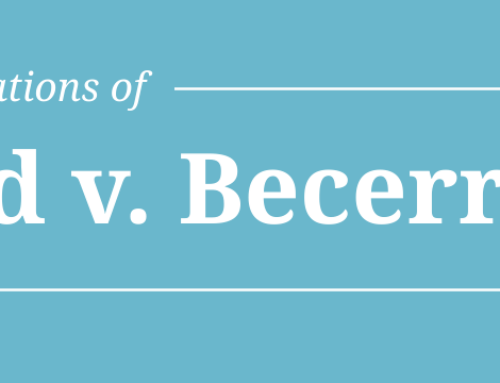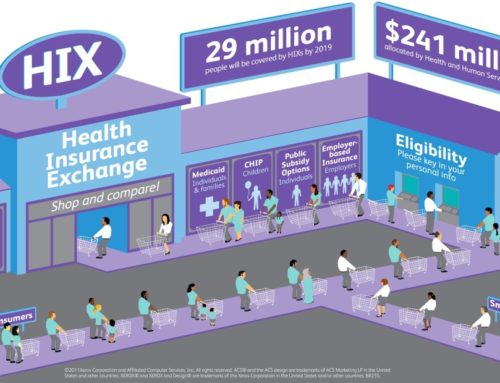Originally Produced: August 2012 Updated: July 2016.
Wellness and Value-Based Insurance Design: Better Outcomes Together
Value-Based Insurance Design (V-BID) is a method of improving individual health and controlling the cost of healthcare. In the case of employer wellness programs, V-BID helps align the amount of health produced with the cost to the consumer. V-BID can integrate existing wellness and health management programs to more wisely invest in those employees, regardless of age, who most need care and to expand preventive services to those at risk of developing a health condition.
Evolution of Wellness Programs
Employers have long cited unhealthy employee behaviors as a major challenge to maintaining affordable health care benefits. Workplace wellness programs emerged as a natural way to encourage and incentivize healthy behaviors, and these programs have evolved considerably over the last decade. Prompted by increasing costs, chronic disease rates, and absenteeism, numerous programs and interventions have been created that combine aspects of care management and wellness incentives. Consumer-Directed Health Plans and Patient Centered Medical Homes are also becoming increasingly popular. The key to obtaining value with any of these programs is:
- Program content (what you deliver)
- Program delivery (how it is delivered)
- Integration with other ongoing programs
V-BID’s Contribution to Wellness
V-BID’s primary goal is to encourage individuals to use high-value services in order to live healthier lives and achieve better health. When combined with wellness programs, V-BID allows businesses to maximize their investment in employee health. There are several ways to integrate the existing infrastructure into wellness programs to improve health and create long-run return on investment. V-BID can contribute to cost saving in several areas:
- Risk-factor modification to avoid preventable conditions
- Enhanced case finding of treatable conditions
- Improved health outcomes resulting from increased use of high value preventive services and better management for chronic conditions
- Increased workplace productivity and presenteeism
- Strategic allocation of resources, purchasing more health from every dollar spent
Creating an Effective V-BID and Wellness Program
Comprehensive, evidence-based wellness programs are critical to population health management. However, engaging an entire workforce with diverse health needs is challenging because no single approach is appropriate for every person. The following value-based principles can guide efforts to refine, enhance, or transform existing wellness programs:
- Focus on behaviors and conditions that are most relevant to the at-risk segments of your population
- Don’t screen for a disease or condition if an evidence-based intervention is not available
- Reduce/eliminate financial and non-financial barriers to approved wellness programs
- Reduce/eliminate financial and non-financial barriers to evidence-based services (visits, diagnostic tests, treatments) for conditions discovered through the program
- Build rewards around both process engagement and outcomes
- Consider penalties for unhealthy behaviors into plan design to balance costs
Certain screening tests such as blood pressure, cholesterol, and glucose are actionable at the employer and/or wellness program level. In contrast, screening tests such as C-reactive protein (CRP) are not actionable at the employer and/or wellness program level. Additionally, the programs will create greater value if they are geared toward the demographics of the specific employee population or toward larger treatable health risks such as tobacco use or diabetes. Designing a successful V-BID/Wellness program entails closely matching the direct and indirect cost of reducing barriers with the likely gains from high value services that target at-risk populations (e.g. smoking cessation, fitness programs for pre-diabetics). Employers should also convey ease of access to drive engagement and offer rewards for participation and subsequent achievement of desired outcomes. Out-of-pocket contribution can be raised correspondingly for employees who do not choose to participate or do not complete a wellness program.
Conclusion
 The synergy between V-BID and wellness can target the segments of the population that would 1) benefit from enhanced access to primary preventive services, and 2) achieve better clinical outcomes once barriers to effective treatments for conditions are reduced. This targeted approach better serves the health care needs of employees and the financial considerations of employers. Economic considerations should encompass more than simply direct medical costs alone, and include non-medical economic benefits of improved health (e.g. increased productivity and lower short and long-term disability) if businesses want to measure the full financial impact of their investments.
The synergy between V-BID and wellness can target the segments of the population that would 1) benefit from enhanced access to primary preventive services, and 2) achieve better clinical outcomes once barriers to effective treatments for conditions are reduced. This targeted approach better serves the health care needs of employees and the financial considerations of employers. Economic considerations should encompass more than simply direct medical costs alone, and include non-medical economic benefits of improved health (e.g. increased productivity and lower short and long-term disability) if businesses want to measure the full financial impact of their investments.
References:
- Value-Based Insurance Design Center: “Wellness and Value-Based Insurance Design: Better Outcomes Together.” August 2012. http://vbidcenter.org/wp-content/uploads/2014/10/Wellness-and-V-BID-Better-Outcomes-togetehr-August-2012.pdf






